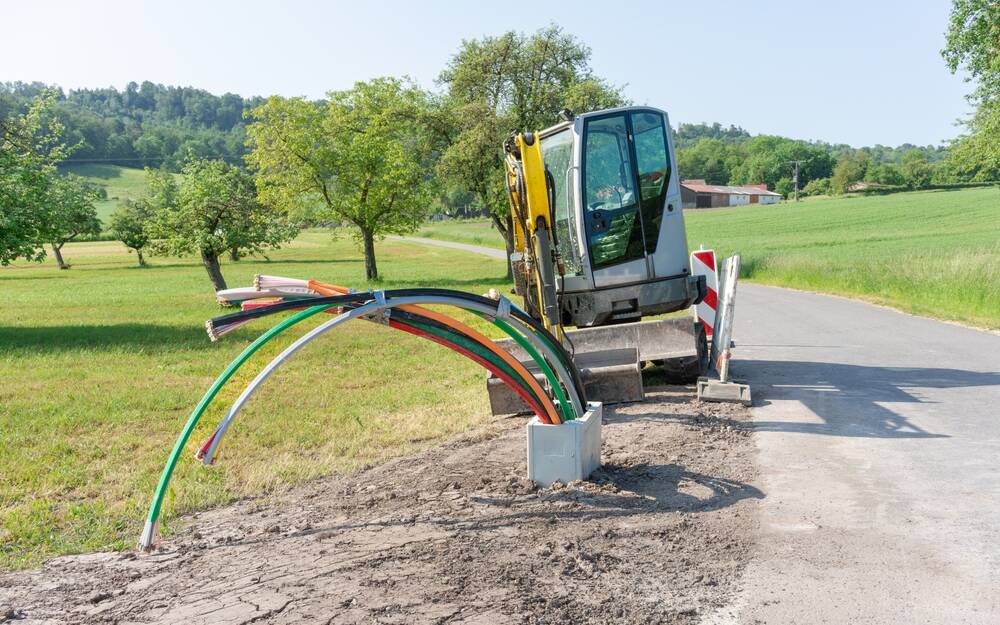BT Fiber Rollout Passes 17 Million Homes, Altnet Challenge Grows

BT Group claims to have pulled off a record build rate of more than a million premises in the final three months of 2024 amid efforts to install fiber connectivity across the UK and fierce competition from altnets.
The Fiber to the Premises (FTTP) stats were outlined in the former state-owned telco monopoly's financial results for Q3 of its fiscal 2025, ended December 31, in which revenue dipped three percent year-on-year to £5.2 billion ($6.46 billion).
We continue to see moderately higher competitor losses with a weaker overall broadband and new homes market
The decline, according to BT's statement, was due to "challenging non-UK trading conditions" in the Global and Portfolio channels plus weaker handset sales in the Consumer division, which the telco claims offset the impact of fiber growth in Openreach and price increases.
However, "strong cost transformation" helped BT file a one percent year-on-year rise in profit before tax to £427 million.
In terms of FTTP expansion, BT said it has now "reached" 17 million properties, claiming this represents more than half of the UK. However, this means BT has deployed fiber infrastructure into areas that have a combined total of 17 million premises, and not that all are connected.
In fact, only 6 million premises are hooked up with FTTP, with the trading update pointing to a take-up rate of "over 35 percent," which it describes as "record demand."
This is the fourth consecutive quarter that the build rate has surpassed a million plus properties, and BT said it is on track to reach more than 4.2 million premises during the full FY25, on the way to its target of 25 million by the end of December 2026.
BT's trading update noted: "Record customer demand for Openreach FTTP with net adds of 472k in the quarter; total premises connected 6m with a growing take up rate of over 35 percent. Openreach total broadband lines fell by 208k (including fiber and copper)."
It added: "we continue to see moderately higher competitor losses with a weaker overall broadband and new homes market," and said more than 80 percent of the line losses occur "where we have not built FTTP." This indicates BT is losing out to rival alternative network providers (altnets) putting fiber in areas where it hasn't so far reached.
Also in the interim report, BT said its Retail FTTP base grew 33 percent year-on-year to 3.2 million, of which Consumer comprised 3 million and Business 0.2 million.
BT's Consumer division saw a year-on-year decline in revenue of 2 percent to £2.5 billion ($3.1 billion), while its Business unit also fell 2 percent to just under £2 billion ($2.5 billion). Openreach grew just 1 percent to £1.533 billion ($1.9 billion).
Allison Kirkby, who took over as chief executive at BT Group about a year ago, said in a statement: "We continue to make progress towards becoming fully focused on the UK, with the sale of our datacenter business in Ireland." She said "cost transformation remains firmly on track, with excellent progress on both energy costs and productivity in the quarter."
The "cost transformation" includes plans to slash 55,000 workers between now and 2030. BT says its "total labour resource" fell three percent year-on-year to 117,000, while network energy usage was also down 3 percent.
- UK gives Openreach £289M for 4 rural broadband contracts in 'gigabit by 2030' push
- Virgin Media to stand up rival network operator to BT Openreach
- Attacks on UK fiber networks mount: Operators beg govt to step in
- Consolidation looms for UK broadband providers
"These results from BT come as no surprise, with continued declines in its global operations weighing on revenues," commented Research Analyst Tom Oughton at market intelligence biz Megabuyte.
"However, progress is being made on scaling back / exiting these operations, with the sale of its Irish datacenters announced in December. Despite this, results for the quarter are in-line with expectations with consumer service revenue growth and a continued strong Openreach FTTP performance providing positives for BT," he added.
"With several altnets focusing on commercialisation (Community Fibre, CityFibre, and the merging Zzoomm/FullFibre), Openreach net broadband losses have clearly increased compared to 2023, though the 708k losses for 2024 represent a mere c. 2% of market share," Oughton said. ®
From Chip War To Cloud War: The Next Frontier In Global Tech Competition
The global chip war, characterized by intense competition among nations and corporations for supremacy in semiconductor ... Read more
The High Stakes Of Tech Regulation: Security Risks And Market Dynamics
The influence of tech giants in the global economy continues to grow, raising crucial questions about how to balance sec... Read more
The Tyranny Of Instagram Interiors: Why It's Time To Break Free From Algorithm-Driven Aesthetics
Instagram has become a dominant force in shaping interior design trends, offering a seemingly endless stream of inspirat... Read more
The Data Crunch In AI: Strategies For Sustainability
Exploring solutions to the imminent exhaustion of internet data for AI training.As the artificial intelligence (AI) indu... Read more
Google Abandons Four-Year Effort To Remove Cookies From Chrome Browser
After four years of dedicated effort, Google has decided to abandon its plan to remove third-party cookies from its Chro... Read more
LinkedIn Embraces AI And Gamification To Drive User Engagement And Revenue
In an effort to tackle slowing revenue growth and enhance user engagement, LinkedIn is turning to artificial intelligenc... Read more

